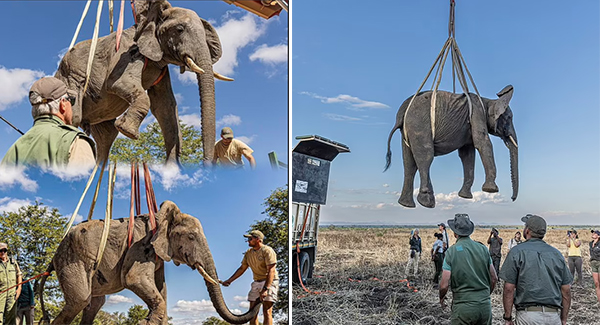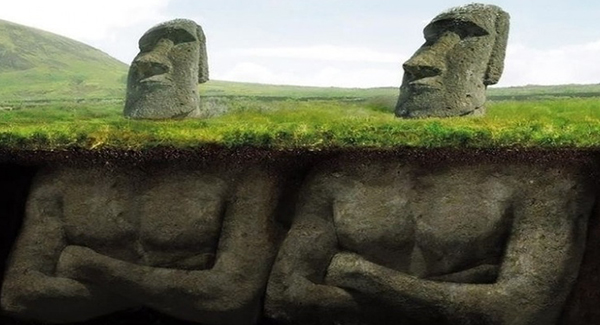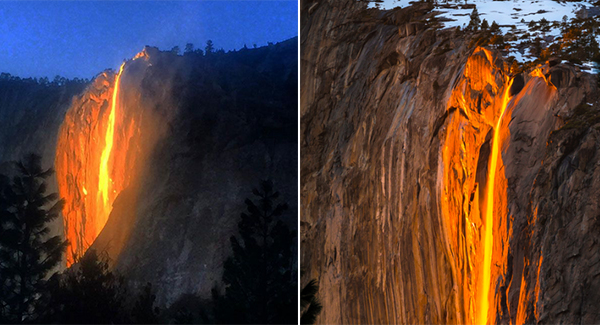New images have revealed exactly how African conservationists have relocated several six-tonne elephants from one national park to another by drugging them and hoisting them into large trucks.

As cranes load them into trucks to be transported from Liwonde National Park to Kasungu National Park, both in Malawi, east Africa, sleepy elephants can be seen lazing around in enormous harnesses in an effort to reduce the number of these animals and lessen conflicts between people and wildlife in the region.

A massive hoist was used to raise the anesthetized animals. Field guide and freelance photojournalist Frank Weitzer acknowledged that moving them was no small task.
Frank said: ‘Loading elephant bulls (males) presents a challenge to capture teams due to the size and sheer weight of the males, which far exceeds that of the females.
‘In the past, bulls were hoisted into the transport crates by ropes tied to their ankles – the safest way to pull up an elephant by a crane – and placed on their sides before being administered the wake-up drug.

The majestic animals were sedated before being elevated using a giant hoist. Male elephants are reportedly harder to move about than females, due to their size

Conservation Solution built a custom harness and rig to lift the elephants up. African elephants are endangered animals, with population sizes dwindling every year.

At times, the bulls found it somewhat difficult to get to their feet inside the confinement of the wake-up box. The enormous elephant bulls were hauled up using a specially made harness that maintains the bull’s erect position, in accordance with a protocol devised by the capture team of Conservation Solution.

The bulls are administered the antidote while erect and with their feet contacting the bottom of the crates after they have been lowered into them. When the bulls awaken, the harness may be taken off, essentially avoiding the tiresome procedure of getting them to stand. This method has made the procedure of loading the bulls much easier.
The photographer described the event, which was organised by African Parks in cooperation with Conservations Solutions and the Malawian Government, as ‘spellbinding’.

Population fragmentation, where families of elephants are split up, has also contributed to African elephants’ endangerments. African elephants are generally found in central African states, but there are populations in west African countries

Frank said the new hoisting technique has ‘immensely facilitated’ the process of moving the beasts. The elephants were given an antidote to wake them up once they were upright and inside the trucks. Frank added: ‘It was spellbinding to see a six-ton animal practically levitating right in front of your camera, seemingly able to jump off the harness at every second, but, of course, being deep in the land of nod.

As usual, I had to pinch myself and hold my breath to make sure I wasn’t dreaming when I was up close and personal with these giants!”
According to the International Union for Conservation of Nature, there is a serious risk of extinction for African elephants. Populations of the beasts, which can weigh up to six tonnes, have been decreasing year-on-year thanks to habitat loss and poaching. Population fragmentation, where families get split up, is also causing elephant numbers to dwindle as well.
Although populations of African elephants can be found in west African nations like Mali, Senegal, and Guinea, they are primarily located in central African states.


